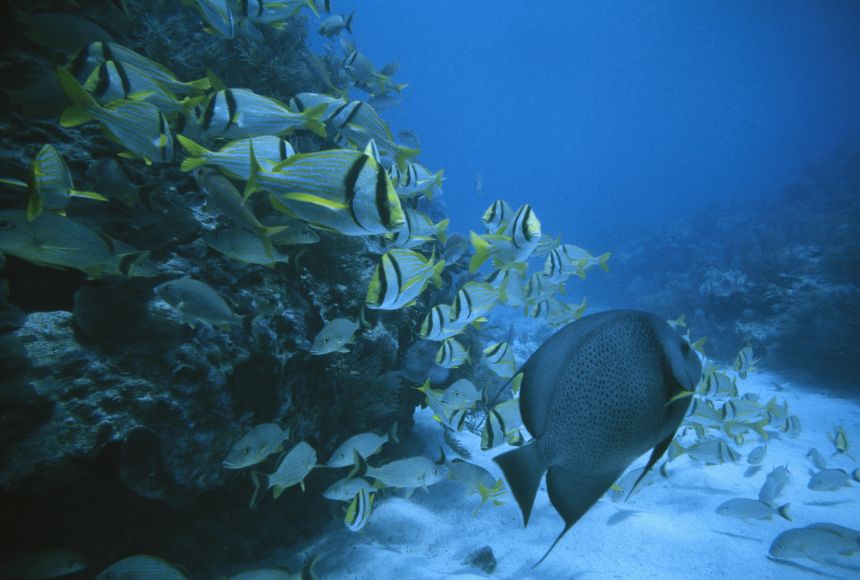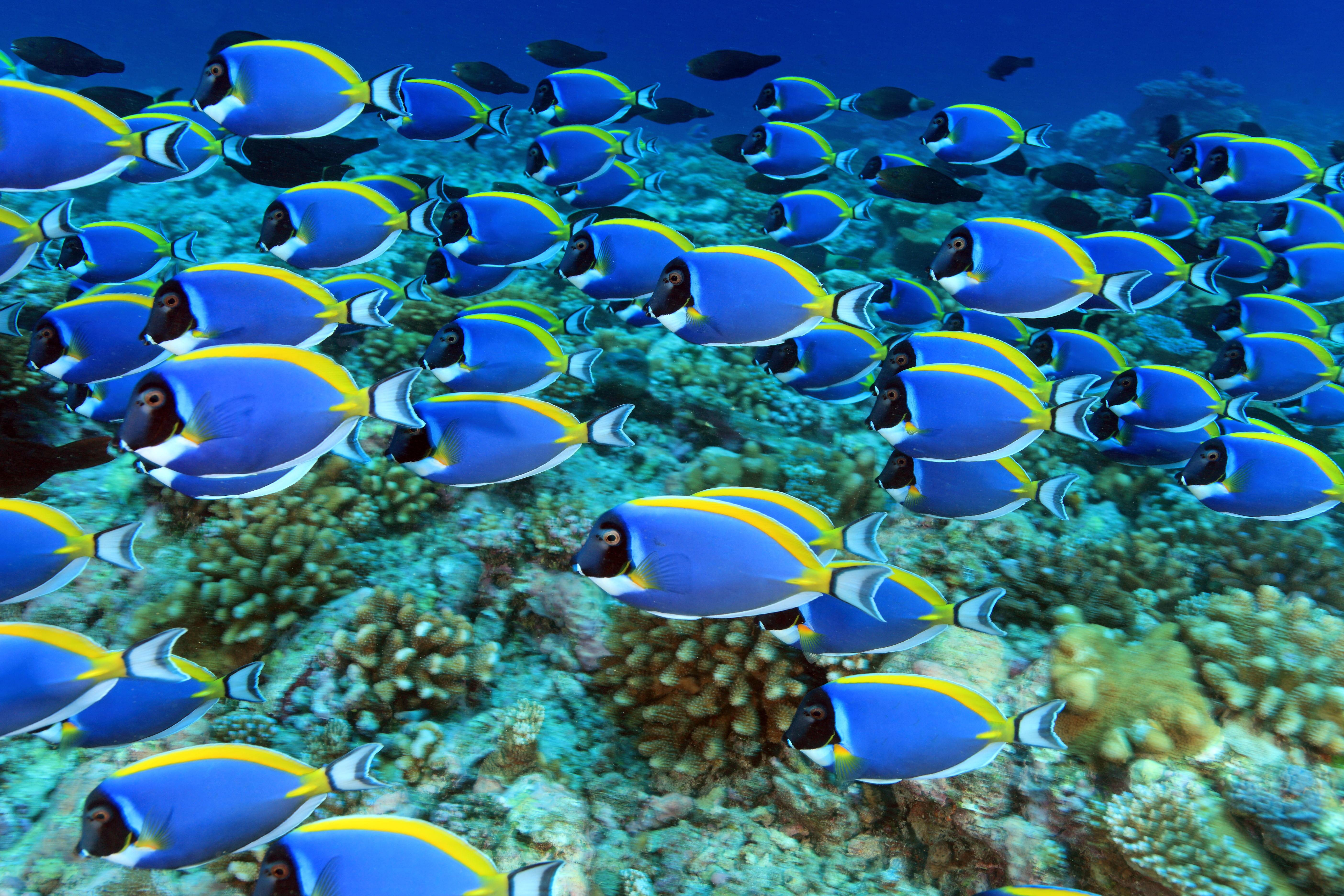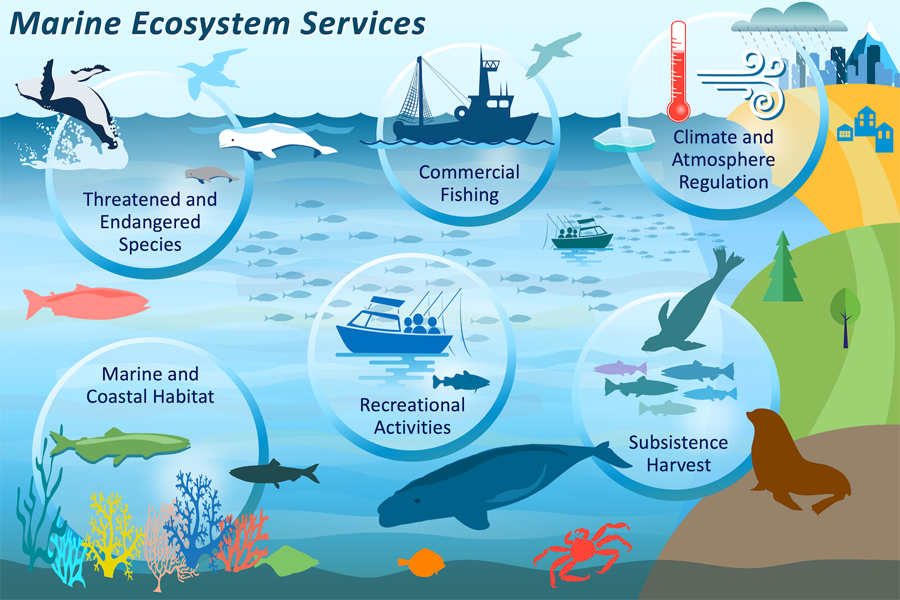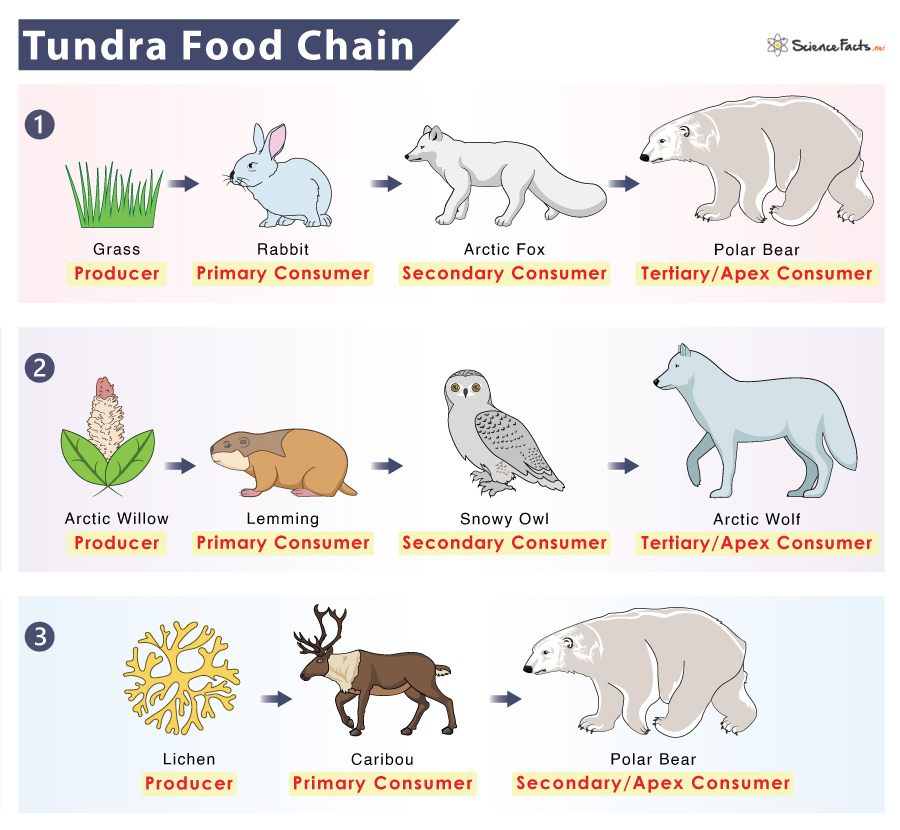Topic what is the ocean ecosystem: Discover the ocean ecosystem, a crucial world beneath waves, teeming with life and playing a pivotal role in Earth"s environmental balance.
Table of Content
- What are the different types of ocean ecosystems?
- Definition and Importance of Ocean Ecosystems
- Major Zones of the Ocean Ecosystem
- Key Species and Biodiversity
- Food Chains and Webs in Ocean Ecosystems
- Role of Oceans in Climate Regulation and Oxygen Production
- YOUTUBE: Ocean Ecosystems - Marine Ecosystems | Aquatic Ecosystem | Exploring Oceans Teaching Oasis
- Threats to Ocean Ecosystems and Conservation Efforts
- Human Impacts and Sustainable Practices
- Emerging Research and Technologies in Oceanography
- International Laws and Policies for Ocean Conservation
- Case Studies of Successful Ocean Ecosystem Management
What are the different types of ocean ecosystems?
The ocean ecosystem is a complex and diverse environment that consists of various types of ecosystems:
- Open Ocean: The open ocean refers to the vast expanse of water beyond the coastal margins. It is the largest and deepest part of the ocean ecosystem.
- Deep-Sea Ocean: The deep-sea ocean is the part of the ocean that lies below the thermocline, which is approximately 200 meters (656 feet) deep. It is characterized by total darkness, extreme pressure, and cold temperatures.
- Coastal Waters: Coastal waters are the areas where land and sea meet, including estuaries, bays, lagoons, and coastal wetlands. These areas are influenced by both oceanic and terrestrial factors and are typically rich in biodiversity.
- Shallow and Coral Reefs: Shallow coastal waters and coral reefs are highly productive and diverse ecosystems. They are home to a wide variety of marine species, including coral, fish, invertebrates, and plants.
- Mangrove Forests: Mangrove forests are found in coastal areas and are made up of salt-tolerant trees and shrubs. They provide important habitat for various marine species and help protect the coastline from erosion.
- Kelp Forests: Kelp forests are found in temperate and polar regions and are characterized by large, brown seaweed called kelp. They provide vital habitat for many marine organisms and serve as a nursery ground for fish.
- Seagrass Meadows: Seagrass meadows are underwater grassy areas commonly found along coastlines. They are important for nutrient cycling, sediment stabilization, and providing habitat for a diverse range of marine life.
Each type of ocean ecosystem has its own unique characteristics and plays a crucial role in supporting marine biodiversity and ecological balance.
READ MORE:
Definition and Importance of Ocean Ecosystems
The ocean ecosystem encompasses a dynamic and vast environment, covering over 70% of the Earth"s surface. It consists of a complex network of living organisms, from microscopic phytoplankton to the largest whales, interacting with their physical surroundings across various habitats like coral reefs, deep-sea vents, and open waters.
Importance of ocean ecosystems extends far beyond their biological diversity. They are fundamental to life on Earth, providing essential services such as:
- Regulation of the global climate by absorbing carbon dioxide.
- Production of oxygen through photosynthesis by oceanic plankton.
- Supporting a rich biodiversity that forms the basis of marine food chains.
- Sustaining economies through fisheries, tourism, and other maritime activities.
- Acting as a vital source for new medicines and bioactive compounds.
Understanding and protecting ocean ecosystems is crucial for maintaining the planet"s health, ensuring food security, and supporting sustainable development for future generations.

Major Zones of the Ocean Ecosystem
The ocean ecosystem is divided into distinct zones, each with unique characteristics and marine life. Understanding these zones helps in comprehending the vast diversity and complexity of oceanic life. The major zones include:
- The Intertidal Zone: This is the area between high and low tide, a dynamic environment that experiences both marine and terrestrial conditions.
- The Pelagic Zone: It encompasses the open ocean waters, divided into the epipelagic (sunlit), mesopelagic (twilight), bathypelagic (midnight), and abyssopelagic (abyss) layers, each hosting unique species adapted to different light levels and pressures.
- The Benthic Zone: This zone covers the ocean floor, including sandy bottoms, rocky outcrops, and deep-sea trenches. It"s home to a variety of organisms that depend on material sinking from above or the chemosynthesis of sulfur compounds.
- The Coral Reefs: Often referred to as the "rainforests of the sea," coral reefs are biodiversity hotspots that provide habitat for thousands of marine species.
- The Estuaries and Mangroves: These areas, where rivers meet the sea, are nurseries for many marine species and act as filters, improving water quality by trapping pollutants.
Each of these zones plays a critical role in the global ocean ecosystem, supporting a wide range of biological processes and species. Conservation efforts in these areas are vital for maintaining the health and productivity of the ocean.
Key Species and Biodiversity
The ocean ecosystem is a treasure trove of biodiversity, hosting millions of species, many of which are yet to be discovered. Key species play critical roles in maintaining the balance and health of marine environments. Highlighted below are some of these vital inhabitants:
- Phytoplankton: Tiny photosynthetic organisms that form the base of the oceanic food web. They produce a significant portion of the Earth"s oxygen and absorb carbon dioxide, influencing climate regulation.
- Zooplankton: These are microscopic animals that feed on phytoplankton. They are a crucial food source for many marine species, including fish, whales, and birds.
- Coral: Corals are essential for creating reef ecosystems, providing habitat, food, and breeding grounds for countless marine species. They also protect coastlines from erosion.
- Fish: Fish species, ranging from tiny reef fish to large predators like sharks and tunas, are integral to marine food webs and human economies.
- Marine Mammals: Whales, dolphins, and seals are not only key predators but also important for nutrient cycling through their feeding and migration habits.
- Sea Turtles and Birds: These species are important for nutrient distribution and serve as indicators of the health of marine environments.
Biodiversity in the ocean is crucial for ecosystem resilience, providing stability against environmental changes and supporting the vast array of life forms that depend on marine ecosystems for survival.

Food Chains and Webs in Ocean Ecosystems
Food chains and webs are fundamental concepts in understanding how energy flows through the ocean ecosystem, supporting the diverse life forms within it. These systems illustrate the interconnectedness of marine species, from the smallest plankton to the largest predators.
- Primary Producers: At the base of the food chain, phytoplankton and some types of algae convert sunlight into energy through photosynthesis, serving as the primary food source for many marine organisms.
- Primary Consumers: These include zooplankton, small fish, and some crustaceans that feed on phytoplankton. They are crucial in transferring energy from primary producers to higher trophic levels.
- Secondary Consumers: Larger fish, certain species of sharks, and small marine mammals that prey on primary consumers fit into this category.
- Tertiary Consumers: Apex predators like larger sharks, killer whales, and large marine mammals consume secondary consumers, maintaining the balance of marine ecosystems.
Food webs offer a more complex and accurate representation of oceanic feeding relationships, showcasing how organisms are part of multiple food chains. This complexity ensures the resilience and stability of ocean ecosystems, enabling them to support a wide range of life forms. The health of these food chains and webs is crucial for the productivity and sustainability of marine environments.
Role of Oceans in Climate Regulation and Oxygen Production
The oceans play a critical role in regulating the Earth"s climate and producing oxygen, essential for life on our planet. Their vastness and complexity allow them to impact weather patterns, global temperatures, and the air we breathe.
- Climate Regulation: Oceans absorb and store solar radiation, distributing heat around the globe via currents. This process moderates climate conditions, influencing weather patterns and temperatures worldwide.
- Carbon Sink: The ocean acts as a significant carbon sink, absorbing carbon dioxide from the atmosphere. Phytoplankton, through photosynthesis, utilize CO2, which helps mitigate the impacts of climate change.
- Oxygen Production: Phytoplankton not only contribute to carbon absorption but also produce oxygen as a byproduct of photosynthesis. It is estimated that about 50% of the Earth"s oxygen comes from the ocean, highlighting its critical role in sustaining life.
- Regulating the Water Cycle: Evaporation from the ocean surface contributes to rainfall distribution across the globe. This cycle is vital for freshwater availability and ecosystem health on land.
Understanding and preserving the oceans" regulatory functions is crucial for maintaining climate stability, ensuring adequate oxygen levels, and supporting life both in the sea and on land.

Ocean Ecosystems - Marine Ecosystems | Aquatic Ecosystem | Exploring Oceans Teaching Oasis
Discover the fascinating world of ocean ecosystems and immerse yourself in the wonders of marine life. Dive deep into the mysteries of the sea and witness the incredible diversity of creatures that call it home. This video will take you on a mesmerizing journey through the depths of our oceans.
Threats to Ocean Ecosystems and Conservation Efforts
Ocean ecosystems face numerous threats that impact their health, biodiversity, and functionality. Recognizing these challenges is the first step towards initiating effective conservation efforts to protect and preserve our oceans for future generations.
- Pollution: Plastic waste, chemicals, and oil spills damage marine habitats, entangle animals, and introduce toxins into the food chain.
- Overfishing: Unsustainable fishing practices deplete fish stocks, disrupt food webs, and threaten marine biodiversity.
- Climate Change: Rising temperatures and ocean acidification, resulting from increased CO2 levels, affect coral reefs, fish populations, and disrupt marine ecosystems.
- Habitat Destruction: Coastal development, dredging, and bottom trawling destroy crucial habitats like mangroves, seagrass beds, and coral reefs.
- Invasive Species: Non-native species introduced into new areas can outcompete native species, altering food webs and ecosystem dynamics.
Conservation efforts to counter these threats include:
- Marine Protected Areas (MPAs): Establishing MPAs to safeguard critical habitats and biodiversity.
- Sustainable Fishing Practices: Implementing quotas and using selective gear to reduce bycatch and allow fish populations to recover.
- Reducing Pollution: Initiatives to reduce plastic use, improve waste management, and treat wastewater before it reaches the ocean.
- Climate Change Mitigation: Global efforts to reduce greenhouse gas emissions and research into methods to increase ocean resilience.
- Restoration Projects: Replanting mangroves, restoring coral reefs, and removing invasive species to rehabilitate damaged ecosystems.
Protecting ocean ecosystems requires global cooperation, innovative solutions, and sustained efforts to ensure their health and vitality for the planet"s future.
Exploring the Ocean Ecosystem: Dive into Marine Life
Embark on an extraordinary adventure as we explore the captivating ocean ecosystem through a thrilling dive. Get ready to plunge into the crystal-clear waters and witness the beauty and intricacy of this underwater world. Let this video be your guide to unlocking the secrets of the deep sea.
Human Impacts and Sustainable Practices
The vast and dynamic ocean ecosystems play a crucial role in supporting life on Earth, but they face significant threats from human activities. Understanding these impacts and implementing sustainable practices are essential for the health and longevity of these vital ecosystems.
Negative Human Impacts
- Overfishing: Intensive fishing practices have led to the depletion of key species, disrupting the balance of marine food webs.
- Pollution: Plastics, chemicals, and other pollutants from land-based sources harm marine life and habitats, affecting biodiversity and ecosystem health.
- Climate Change: Rising temperatures and ocean acidification, a result of increased CO2 levels, threaten coral reefs and other sensitive habitats.
- Habitat Destruction: Coastal development, dredging, and bottom trawling destroy critical habitats, such as mangroves, seagrasses, and coral reefs.
Sustainable Practices
To mitigate these impacts, a range of sustainable practices are being adopted globally:
- Marine Protected Areas (MPAs): Designating MPAs helps conserve biodiversity, protect endangered species, and restore fish stocks.
- Sustainable Fishing: Implementing quotas, size limits, and gear restrictions to ensure fishing practices do not harm the ecosystem.
- Reducing Pollution: Efforts to reduce plastic use, improve waste management, and prevent chemical runoff protect marine environments.
- Climate Action: Reducing greenhouse gas emissions and supporting renewable energy initiatives to combat ocean warming and acidification.
- Habitat Restoration: Projects to restore mangroves, coral reefs, and seagrasses support biodiversity and enhance ecosystem resilience.
Engaging in these sustainable practices and promoting awareness are vital steps towards preserving our ocean ecosystems for future generations. By taking collective action, we can ensure the health and vitality of the ocean and its inhabitants.

Emerging Research and Technologies in Oceanography
The field of oceanography is experiencing rapid advancements thanks to emerging research and technologies. These innovations are enhancing our understanding of ocean ecosystems, improving conservation efforts, and helping to mitigate the impacts of climate change.
Advanced Observation Tools
- Autonomous Underwater Vehicles (AUVs) and Drones: These devices allow for the exploration and monitoring of remote or deep parts of the ocean, collecting data on water temperature, salinity, and marine life without human intervention.
- Satellite Remote Sensing: Satellites equipped with sensors monitor the global ocean, tracking changes in sea surface temperature, sea level rise, and the extent of sea ice, providing valuable data for climate change research.
- Acoustic Monitoring: Using sound to map the seafloor and track marine species movements, helping scientists study habitats and behaviors in unprecedented detail.
Innovative Research Methods
- eDNA Analysis: Environmental DNA (eDNA) sampling is a non-invasive method that detects genetic material shed by organisms into their environment, allowing researchers to identify species present in water samples without seeing them directly.
- Climate Models: Advanced computational models simulate ocean currents, temperature, and weather patterns, aiding in the prediction of climate change impacts on ocean ecosystems.
Conservation Technologies
- Coral Reef Restoration: Techniques such as 3D printing are being used to create artificial reef structures that encourage coral growth and provide habitats for marine life.
- Marine Protected Area (MPA) Management: Technology plays a key role in monitoring MPAs, using GPS and satellite imagery to enforce regulations and protect biodiversity.
Technology-Enhanced Education and Awareness
Virtual reality (VR) and augmented reality (AR) technologies are being used to create immersive educational experiences, allowing people to explore underwater environments without getting wet. This helps in raising awareness about the importance of ocean conservation.
The combination of these emerging technologies and research methods is transforming oceanography, enabling scientists to collect more accurate data, understand marine ecosystems in greater depth, and develop innovative solutions to the challenges facing our oceans.
International Laws and Policies for Ocean Conservation
International laws and policies play a pivotal role in the conservation of ocean ecosystems, addressing issues such as pollution, overfishing, and habitat destruction on a global scale. These frameworks are designed to facilitate cooperation among nations, ensuring the sustainable use and protection of marine resources.
Key International Agreements
- United Nations Convention on the Law of the Sea (UNCLOS): Often referred to as the "Constitution for the Oceans," this comprehensive framework sets out the legal basis for marine and maritime activities, including the conservation and management of ocean resources.
- Convention on Biological Diversity (CBD): This agreement promotes the conservation of biodiversity, sustainable use of its components, and the equitable sharing of benefits arising from genetic resources. It includes specific provisions for marine and coastal biodiversity.
- Marine Pollution (MARPOL) Convention: Focused on preventing marine pollution by ships, MARPOL sets strict regulations on the discharge of pollutants, including oil, chemicals, and garbage, into the ocean.
- International Convention for the Regulation of Whaling: This convention established the International Whaling Commission (IWC) to conserve whale populations and manage whaling practices sustainably.
Regional Agreements and Initiatives
In addition to global treaties, regional agreements and initiatives are crucial for addressing local and regional conservation challenges. These include:
- Regional Seas Programmes: Led by the United Nations Environment Programme (UNEP), these programmes focus on protecting the marine environment in specific regions through the cooperation of neighboring countries.
- Fisheries Management Organizations: Regional bodies, such as the North Atlantic Fisheries Organization (NAFO), manage fish stocks and regulate fishing practices to prevent overexploitation.
Recent Developments
Recent years have seen the introduction of new international frameworks aimed at addressing emerging ocean conservation challenges, such as the United Nations" Sustainable Development Goal 14, which seeks to conserve and sustainably use the oceans, seas, and marine resources for sustainable development.
The collective efforts embodied in these international laws and policies are essential for the preservation of ocean ecosystems. By fostering global cooperation and compliance, they lay the groundwork for a sustainable future for our oceans.

READ MORE:
Case Studies of Successful Ocean Ecosystem Management
The conservation and sustainable management of ocean ecosystems are critical for maintaining biodiversity, supporting fisheries, and ensuring the health of our planet. Several case studies from around the world illustrate successful approaches to ocean ecosystem management.
Great Barrier Reef, Australia
Recognized as one of the most effectively managed marine ecosystems, the Great Barrier Reef Marine Park employs a comprehensive zoning plan that balances conservation with sustainable use. Measures include protected areas where fishing and tourism are regulated, alongside ongoing monitoring and research to inform adaptive management strategies.
Galápagos Marine Reserve, Ecuador
The Galápagos Marine Reserve is one of the largest marine protected areas (MPAs) in the world, known for its unique biodiversity. Management efforts focus on controlling fishing, monitoring species populations, and regulating tourism to minimize environmental impacts, with local communities playing a key role in conservation activities.
Marine Stewardship Council (MSC) Certification Program
The MSC Certification Program is a global, science-based initiative that promotes sustainable fishing practices. It awards certifications to fisheries that demonstrate sustainable fish stock management, minimal environmental impact, and effective management. This program has led to the recovery of several fish populations and the improvement of fishing practices worldwide.
Community-Based Management in the Philippines
In the Philippines, community-based approaches have been successful in restoring and conserving coastal and marine ecosystems. Local communities are involved in creating and enforcing marine protected areas, managing fisheries, and protecting habitats, leading to increased fish stocks and improved livelihoods.
Antarctic Treaty System
The Antarctic Treaty System is a unique example of international cooperation in managing and conserving a marine ecosystem. It regulates activities in the Antarctic to ensure the conservation of the environment, including the Southern Ocean. Measures include restrictions on commercial fishing and protections for marine life, based on scientific research.
These case studies demonstrate the effectiveness of diverse management strategies, from local community involvement to international agreements, in preserving ocean ecosystems. They highlight the importance of tailored, evidence-based approaches and the need for global cooperation in ocean conservation efforts.
Embark on a journey through the ocean"s heart, discovering its ecosystems, the challenges they face, and the innovative solutions driving their conservation. Let"s dive into understanding and protecting the lifeblood of our planet together.

:max_bytes(150000):strip_icc()/489034241_5-56af62885f9b58b7d0183204.jpg)


:max_bytes(150000):strip_icc()/497408077-56af61ff3df78cf772c3c309.jpg)





:max_bytes(150000):strip_icc()/tundra-58bf1be55f9b58af5cc29755.jpg)
:max_bytes(150000):strip_icc()/GettyImages-901482062-6470b1099c6a47a881f9a22d7bca0d0a.jpg)
